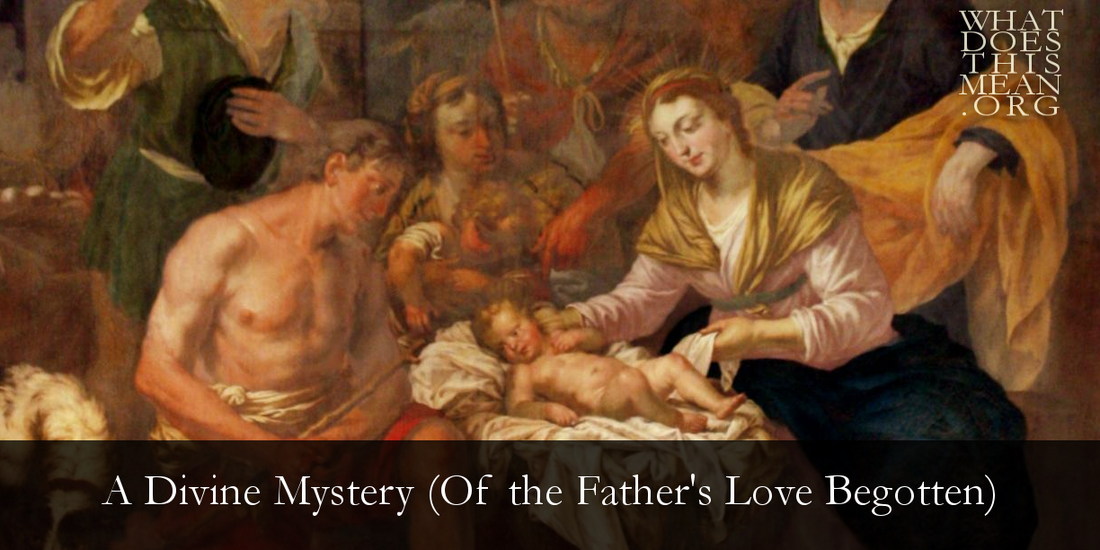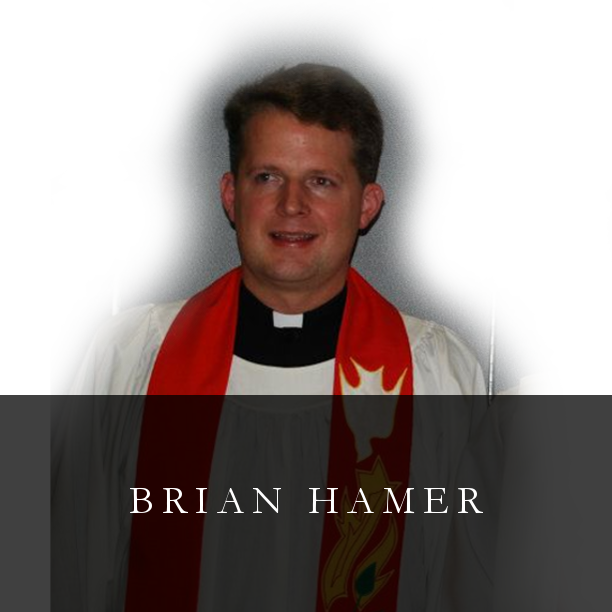The text of this hymn hails from the Spanish hymn writer, Aurelius Clemens Prudentius (348—circa. 413). Little is known about Prudentius, whose poetry has been described as “gold set with precious stones.” He took up the art of hymn writing late in life, when, at age 57, he realized the follies of his youthful ways and retired to a monastery to write the sacred poems that have made him a household name in most Lutheran hymnals. He wrote about 28 hymns in all, including a text for The Holy Innocents (December 28th), “Sweet Floweret of the Martyr Band,” which is not included in LSB. It is regretful that Prudentius is arguably a “One Hymn Wonder,” especially since Luther said that Prudentius should be studied in the schools, and he is also known as “The Horace and Virgil of the Christians.”
In LSB, “Of the Father’s Love” is a cento or excerpt from a longer poem, originally consisting of 9 stanzas of 7 lines each. Both TLH and LSB list the early Christian hymn in I Timothy 3:16 as one of the primary biblical references for this hymn:
Great indeed, we confess, is the mystery of godliness:
[Christ] was manifested in the flesh,
vindicated by the Spirit,
seen by angels,
proclaimed among the nations,
believed on in the world
taken up in glory.
This text permeates the overall theology of the hymn as it proclaims a broad pallet of the Christological mysteries of the person and work of Christ, including His conception, birth, and Passion (“the world’s Redeemer”). To this primary scriptural referent LSB adds Rev. 1:8, “ ‘I am the Alpha and the Omega,’ says the Lord God, who is and who was and who is to come, the Almighty,’” which coordinates perfectly with the last two words of each stanza, “evermore and evermore” (saeculorum saeculis). LSB also lists the early baptismal hymn on the eternal Logos in John 1:1, “In the beginning was the Word, “etc., and the final revelation of the Second Coming in Phil. 2:11, “and every tongue confess that Jesus Christ is Lord, to the glory of God the Father.”
The creedal hymn in I Timothy 3:16 is a convenient hymn to the origins of the tune, DIVINUM MYSTERIUM. The plainchant was originally part of a Sanctus trope, i.e. an ancient plainsong melody that was embellished as an extension of the Sanctus. Prudentius’s text was first paired with this tune (slightly altered from the triple meter) in the 1800’s. The musical arrangement in TLH did a great disservice to the tune by forcing it into the musical “straight jacket” of 4/4 meter, losing the mysterious nature of the tune, and explaining why this hymn desperately needed a musical makeover in the era after TLH. More recent hymnals, including LSB, reflect the Gregorian heritage of notes set in groups of two’s and three’s, as shown by the stems on the eighth notes in LSB.
Listen to three stanzas of this hymn (stz. 1, 2, and 5 in LSB), sung by New York City’s Accord Treble Choir, as recorded on demand for www.WhatDoesThisMean.org:
A fuller arrangement, appropriate for congregations with substantial musical resources (including hand bells) is sung in the following excerpt by a men’s choir:
Most hymnals include “Of the Father’s Love” in the Christmas section of the hymnal, but usually in the latter portion since the text proclaims in perfect tense (i.e., completed action) what has already happened, in contrast to the imperfect tense (i.e., incomplete action) of most Advent hymns. This hymn is a perfect fit for Christmas, but the broad theological scope also makes it a perfect fit for the Epiphany season as the church extols the good news that Christ has revealed His sacred face, and “Now He shines, the long expected . . . Evermore and evermore.”



 RSS Feed
RSS Feed
